There are situations when you need to get rid of manicure at home. It is not difficult to cope with ordinary varnish coating. But if shellac is applied to the nails, you will have to work hard. However, this task is quite feasible. This article will help you find out how to remove shellac from the marigolds without contacting the salon.
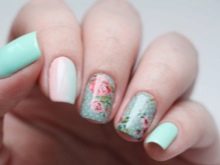
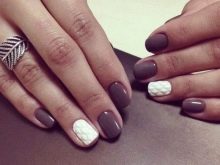
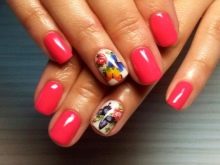
Is it possible to remove shellac on my own?
This nail polish appeared in the field of manicure in 2010. Shellac immediately gained popularity, as this composition has unique and more advantageous properties (in comparison with conventional varnishes). We can say that this is a kind of combination of two components: colored varnish and firming gel. Thanks to this, the coating on the nails lasts much longer.
This increased durability has brought some inconvenience. It was not possible to remove such a coating from the nails by the means by which ordinary nail polish is easily removed. True, for manicure salons this has become a big bonus. Now, clients often turn to the master, not only to apply manicure, but also in order to get rid of it later. However, many were not afraid to try to remove shellac from nails at home.
By trial and error, resourceful girls were still able to find simple methods and means by which you can independently carry out such a procedure.


How to remove?
It will not be possible to quickly remove shellac, so please be patient. On average, the whole process takes about an hour.
In the salons, this procedure is faster. Professional craftsmen use two methods to remove such a coating from nails.
- One of them is that the shellac layer is first treated with solvent compositions. To do this, fingers with manicure are wrapped with mini compresses with a special liquid. After the coating has softened, it is removed by a gentle mechanical method. An alternative to this particular shellac removal method is available for use at home. About it will be described in detail below.
- The second method appeared not so long ago. The coating is treated with a special machine for manicure, grinding off a layer of shellac. This machine is called a milling cutter. This method is better for acrylic nails. Accurate machining does not damage the extended nails, while solvents can adversely affect the acrylic layer.
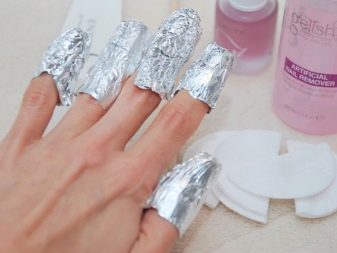
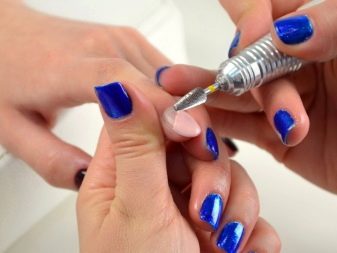
To remove the shellac coating correctly and not harm the nails, You will need to prepare the necessary tools and supporting materials in advance.
- A few cotton pads or pieces of gauze. They will need to be moistened in a solvent liquid and applied to the nail plates. Therefore, for convenience, cut them in advance into small pieces that completely cover each nail. If you use cheesecloth, then the pieces should be folded in 3-4 layers.
- Foil or special silicone nail pads. Locking caps are available at stores. They are sold in sets and are very convenient to use. They can be used a large number of times, just rinsing and drying after each use. Foil is a more affordable and economical option. Cut it into strips about 2 times wider than your nails. The length of these strips should be such that it is enough for 3-4 turns around the upper phalanx.
- Gel Polish Remover. Any product containing acetone will also work.
- Orange wood sticks used to move the cuticle. With this simple tool it is convenient to clean the remnants of the softened shellac layer from the nail plates.
- Medium hard file for polishing, as well as a hard abrasive file. The second is useful for cleaning off the upper protective and most dense layer of varnish, the so-called top.
- Moisturizing oily cream or grape seed oil.
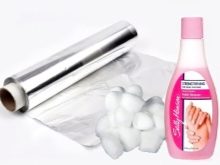
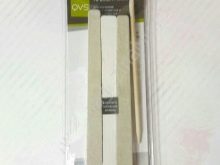

This is a standard set for the most convenient and effective shellac removal at home.
If you don’t have any special liquids or acetone-containing products in your home, you can replace them with isopropyl alcohol. This substance also dissolves hard varnish. This product is sold in household chemistry departments and in hardware stores. It is only worth remembering that if you decide to use isopropyl alcohol, you should not keep it on your nails for longer than 15 minutes.
Instead of foil, you can use cling film to wrap your fingers.
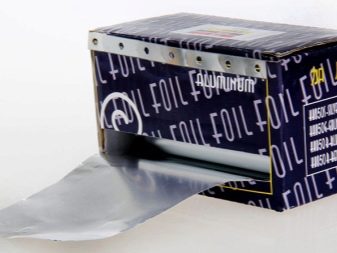

The procedure for removing the varnish layer using foil or linings.
- Treat the skin around the nails with a nourishing cream or oil. This will help protect it from solvent exposure.
- The surface of the shellac coating should be slightly treated with a nail file to remove the most stable top layer. This procedure is not mandatory, but its implementation will significantly reduce the time of softening of the varnish coating.
- Cotton pads or pieces of gauze should be moistened liberally in a special composition or in acetone. Each moistened piece should be applied to the nail plate so that it completely covers it.
- Over the material impregnated with a solvent, it is necessary to wrap the foil. It must be wound in several layers on the tip of each finger and fix the upper free edge in the form of a cone. The foil should fit snugly on the upper phalanx. Instead of foil, you can use special silicone caps.They are easily and conveniently worn on a finger over pieces of cotton pads. The processing time of the shellac layer in this way is 15-20 minutes. That is how much time you need to keep your fingers in the foil. Hands should be placed with palms down. This will ensure the most uniform distribution of the composition on the nail plates.
- After the aforementioned period of time, the foil or retaining pads together with the cotton pads are removed from the fingers. The coating should lose its integrity and begin to exfoliate in small fragments.
- Softened shellac is easily removed with the flat end of an orange stick. Difficult outgoing fragments will need to be re-treated with acetone and the procedure for scraping the varnish layer to be repeated.
- Treat the surface of the nails with a grinding file.
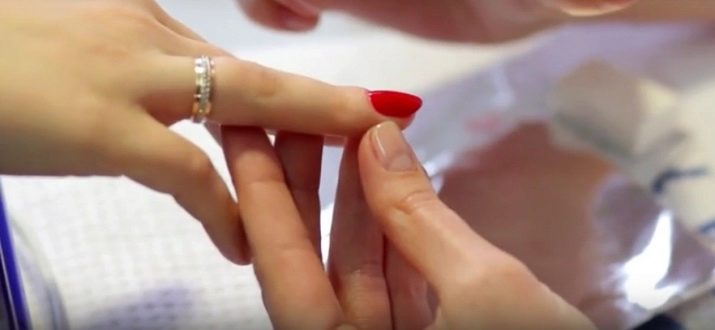
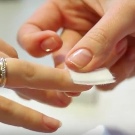
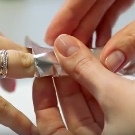
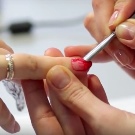
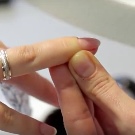
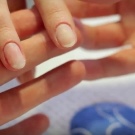
Removing shellac in an alternative way.
- The preparatory stage is identical: hands need to be washed, wiped and a softening cream applied to the skin of the fingers around the nail plates.
- Pour acetone or gel polish remover into a small glass or porcelain container. You need so much fluid that you can immerse the upper phalanges of the fingers.
- Each finger wrap a small piece of patch in one layer. The main thing is that the patch covers the nail plates.
- Immerse the upper phalanges of the fingers in the liquid and wait 10-15 minutes.
- Further, the patch can be removed. Shellac softened in a solution is removed using an orange stick.
- The final stage is the grinding of the nail plates.
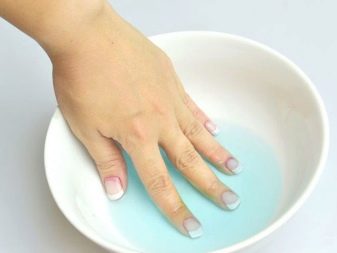
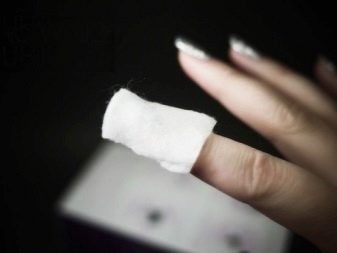
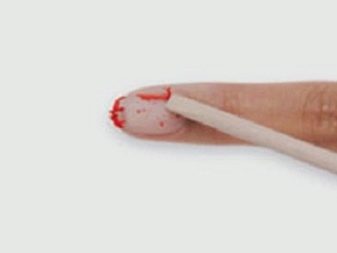
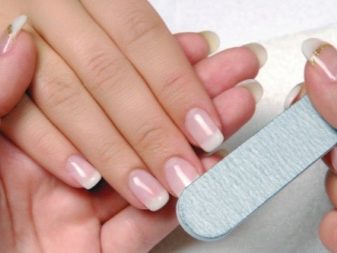
Shellac removal without harm
In order not to harm your nails some errors should be avoided.
- Never attempt to cut a hard surface with hard metal files or other sharp tools. This is fraught with nail injuries, not to mention the spoiled appearance of the nail plates.
- When cutting off the top coat, do not overdo it. If you sand the surface of the shellac layer too intensely, you can damage the nail itself. Damaged nail plates will have to be treated and repaired for a long time.
- Shellac must be pre-softened. But the use of gasoline, kerosene or acids for these purposes is strictly contraindicated. Solvents should not be too aggressive. From these substances, the skin and nails will suffer greatly.
- According to experts, the dissolution and removal of shellac from the nail plates depends on the ambient temperature. The coating is more difficult to remove if the room is cool or the woman has cold hands during the procedure. At home, you should also take care of the temperature conditions. Many girls warm their fingers wrapped in foil with a hairdryer and claim that it significantly speeds up and facilitates the entire process of removing manicure.
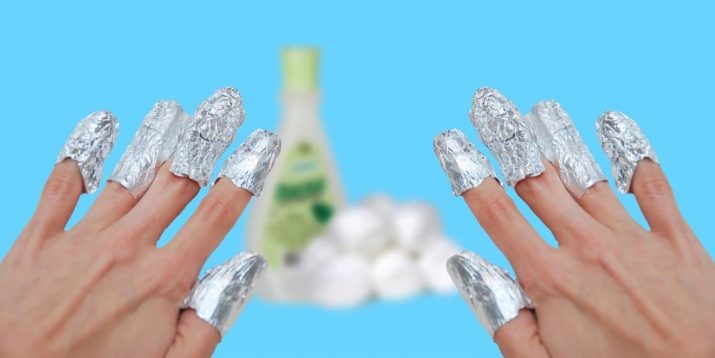
Precautions during the procedure:
- In contact with acetone or solvent, be mindful of your sensations. If you feel your fingers are sore, they feel burning, tingling, or other unpleasant sensations, stop the procedure immediately. Such manifestations may be a sign of an allergic reaction or serious skin irritation.
- Even professional nail polish removers are quite toxic. They emit a pungent odor, and at high concentrations in the inhaled air can cause irritation of the respiratory tract and organs. Therefore, the removal of varnish using such means should be carried out in a well-ventilated area.
- Avoid contact of aggressive solvents with mucous membranes or with damaged skin.

Care after removal
To keep the nails healthy, strong and beautiful, it is important to regularly carry out procedures for their care. The process of removing the shellac layer involves contact with aggressive solvents, therefore, after such a traumatic procedure, a number of measures should be taken to restore the nail plates.
- Iodine-salt baths perfectly strengthen the nails. Pour 150-200 ml of warm water into a small container. Add 1 tbsp there. a spoonful of salt (preferably sea) and a few drops of iodine. The solution should lightly brown. Hold your fingers in the bath for 15-20 minutes.
- Essential oils of pine, bergamot, lavender can be added to the saline solution. Essential oils of citrus fruits: orange, lemon, grapefruit, have an excellent healing effect.
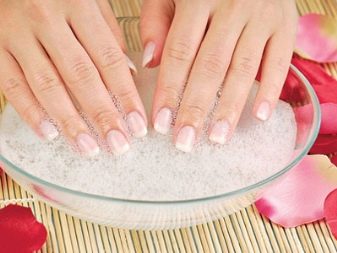
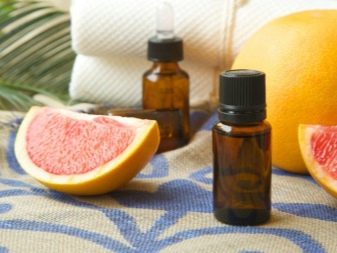
- Indulge your nails with herbal decoctions. They can be prepared from yarrow, nettle, oak bark, chamomile. Raw materials taken in the amount of 1 tablespoon should be poured with a glass of boiling water and left in a closed thermos for half an hour. After - strain the broth and cool to a warm state. For the best effect, you can add iodized sea salt to the herbal bath.
- Beer chamomile infusion is also a good home remedy for healing marigolds. A glass of dark beer needs to be heated in an enameled saucepan, but not boiled. In a thermos pour 1 tbsp. a spoonful of chopped chamomile and pour hot beer. Insist the mixture for 15-20 minutes, then strain and allow to cool slightly. Apply the resulting composition in the form of baths lasting about 15 minutes. This recipe gives excellent results and can be used every day without harm to the appearance and condition of the nails.
- Lemon juice is very useful for nail plates. It is rich in vitamin C and has a soft whitening, restoring and accelerating effect on marigold growth. To soften the acids contained in lemon juice, the product is used in a mixture with glycerin and honey. To prepare the therapeutic composition, you need to mix the components in the following proportions: 100 g of glycerin, 1 tbsp. spoon of honey, 2 tbsp. tablespoons of freshly squeezed juice. To make the procedure comfortable, it is better to warm the mixture a little to a warm state. The tool is used in the form of baths. Fingers need to be immersed in a warm mixture for 15-20 minutes.

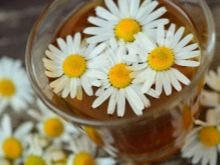
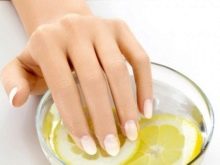
- After each treatment procedure, it is useful to lubricate the nails and the skin around them with nourishing creams or oils. After this, the nails always look shiny and well-groomed.
- You can purchase special strengthening and wellness creams or gels for nails. They include vitamins and therapeutic components. Nail plates also respond well to treatment with ordinary nutritious cream or grape seed oil.
How to remove shellac at home, see the next video.










